




Grease stains on tiles can be unsightly and difficult to remove without the right tools and techniques. Whether it’s from cooking splatters or oily residues, these stains can build up over time and become a real headache. Fortunately, there are several effective methods for removing grease stains from tiles, leaving them clean and shiny once again.
1. Dish Soap and Warm Water: One of the simplest ways to remove grease stains from tiles is to create a mixture of dish soap and warm water. Apply the soapy solution to the stained area and scrub gently with a sponge or cloth. Rinse thoroughly with water to remove any residue.
2. Baking Soda and Vinegar: Another popular method is to make a paste using baking soda and vinegar. Apply the paste to the grease stain and let it sit for a few minutes. Then, scrub the area with a brush or cloth and rinse well.
3. Ammonia Solution: For stubborn grease stains, an ammonia solution can be highly effective. Mix equal parts of ammonia and water, apply the solution to the stained area, and let it sit for a few minutes. Scrub with a brush and rinse thoroughly to remove any residue.
Expert Tip: When using cleaning solutions, always test them on a small, inconspicuous area of the tile to ensure they do not cause any damage or discoloration.
4. Commercial Tile Cleaners: If homemade solutions don’t do the trick, there are many commercial tile cleaners available on the market specifically designed to remove grease stains. Follow the instructions carefully and use as directed.
By using these effective cleaning methods and techniques, you can say goodbye to grease stains on your tiles and restore their original beauty. Remember to always take proper precautions, such as wearing gloves and ensuring proper ventilation, when using cleaning solutions.
Understanding the Problem
Grease stains on tiles can be a common problem in kitchens, bathrooms, and other areas where cooking or oil-based products are used. These stains can make the tiles look dirty and can be difficult to remove if not addressed properly.
When cooking or using products that contain oil, droplets can easily splatter onto the tiles and leave behind greasy stains. Over time, these stains can accumulate and become more difficult to remove. Additionally, grease can attract dirt and dust, causing the tiles to become even dirtier.
It is important to understand that not all tiles are the same and some may be more prone to staining than others. Porous tiles, such as natural stone or unglazed ceramic tiles, are more susceptible to grease stains as they can absorb the oils. On the other hand, glazed ceramic or porcelain tiles have a protective layer that makes them less prone to staining.
Some common sources of grease stains on tiles include cooking oil, greasy food splatter, oily cleaning products, and hair products. It is important to identify the source of the stain to determine the most effective cleaning method.
Attempting to clean grease stains with regular soap and water may not be sufficient, as grease is not water-soluble. Specialized cleaning techniques and products are often required to effectively remove grease stains from tiles.
In the following sections, we will explore various methods and tips for removing grease stains from tiles effectively. By understanding the problem and using the appropriate cleaning methods, you can restore the cleanliness and shine of your tiles.
Identifying the Type of Tile
Before you begin removing grease stains from your tiles, it’s important to identify the type of tile you have. Different types of tiles may require different cleaning methods to avoid damage and ensure effective stain removal.
Ceramic Tiles
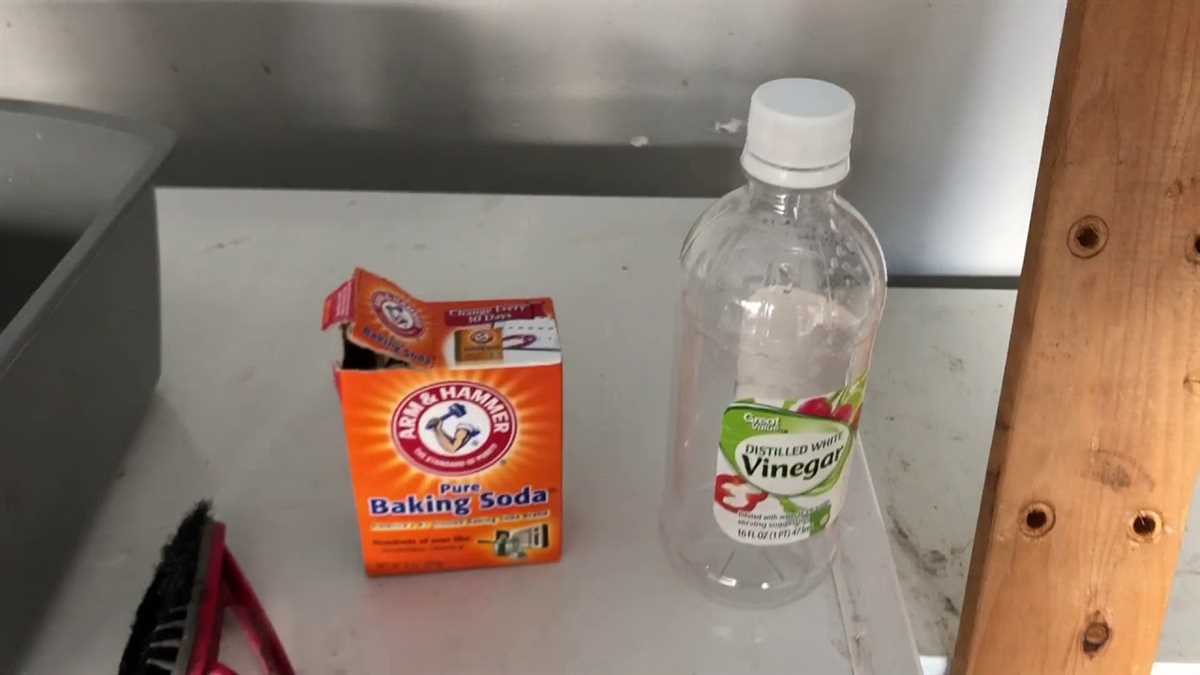
Ceramic tiles are one of the most common types of tiles used in kitchens and bathrooms. They are generally resistant to stains, but grease can sometimes adhere to their surface. Ceramic tiles have a hard and glossy finish, which makes them easier to clean.
Porcelain Tiles
Porcelain tiles are another popular choice for kitchens and bathrooms. They are similar to ceramic tiles in terms of appearance but are denser and more durable. Porcelain tiles are resistant to stains, including grease stains, and can withstand harsher cleaning methods.
Stone Tiles
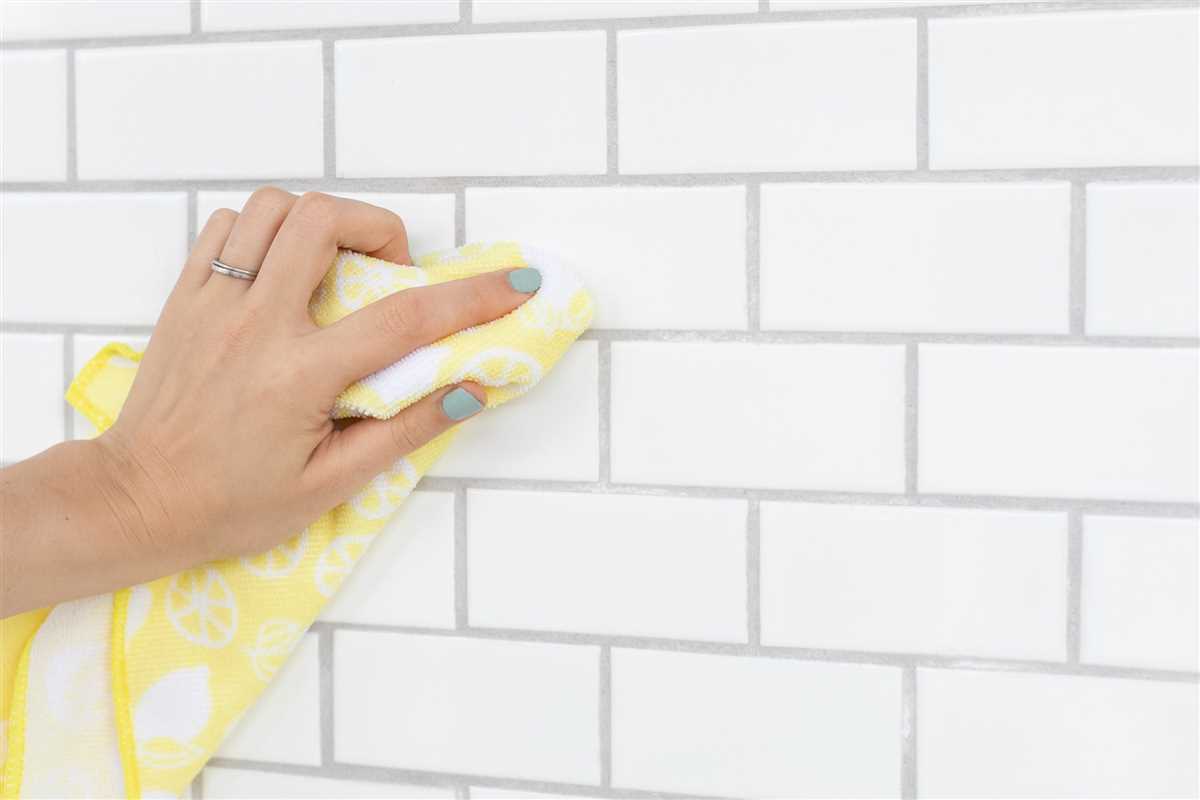
Natural stone tiles, such as granite or marble, can add a touch of luxury to your space. However, they require special care when it comes to removing grease stains. Stone tiles are porous and can absorb grease quickly. Using harsh cleaners or scrubbing vigorously can damage the surface of the stone.
Quarry Tiles
Quarry tiles are known for their natural, rustic look. They are often used in outdoor or high-traffic areas. Quarry tiles are typically unglazed, making them more susceptible to stains, including grease stains. Extra care should be taken when cleaning these tiles to avoid damaging their surface.
Vinyl Tiles
Vinyl tiles are a budget-friendly option that mimics the appearance of other types of tiles. They are waterproof and resistant to stains, including grease stains. Vinyl tiles are relatively easy to clean and maintain, making them a popular choice for kitchens and bathrooms.
By correctly identifying the type of tile you have, you can choose the most suitable cleaning method to effectively remove grease stains without causing any damage.
Expert Cleaning Tips

Here are some expert cleaning tips to help you remove grease stains from tiles:
1. Dish Soap
Start by mixing a few drops of dish soap with warm water. Apply this mixture to the grease stain and let it sit for a few minutes. Scrub the area gently with a soft-bristle brush or sponge. Rinse the tiles thoroughly with water.
2. Baking Soda
Baking soda has excellent grease-absorbing properties. Create a paste by mixing baking soda with water. Apply the paste to the grease stain and let it sit for about 10-15 minutes. Scrub the area with a brush or sponge, then rinse with water.
3. Vinegar
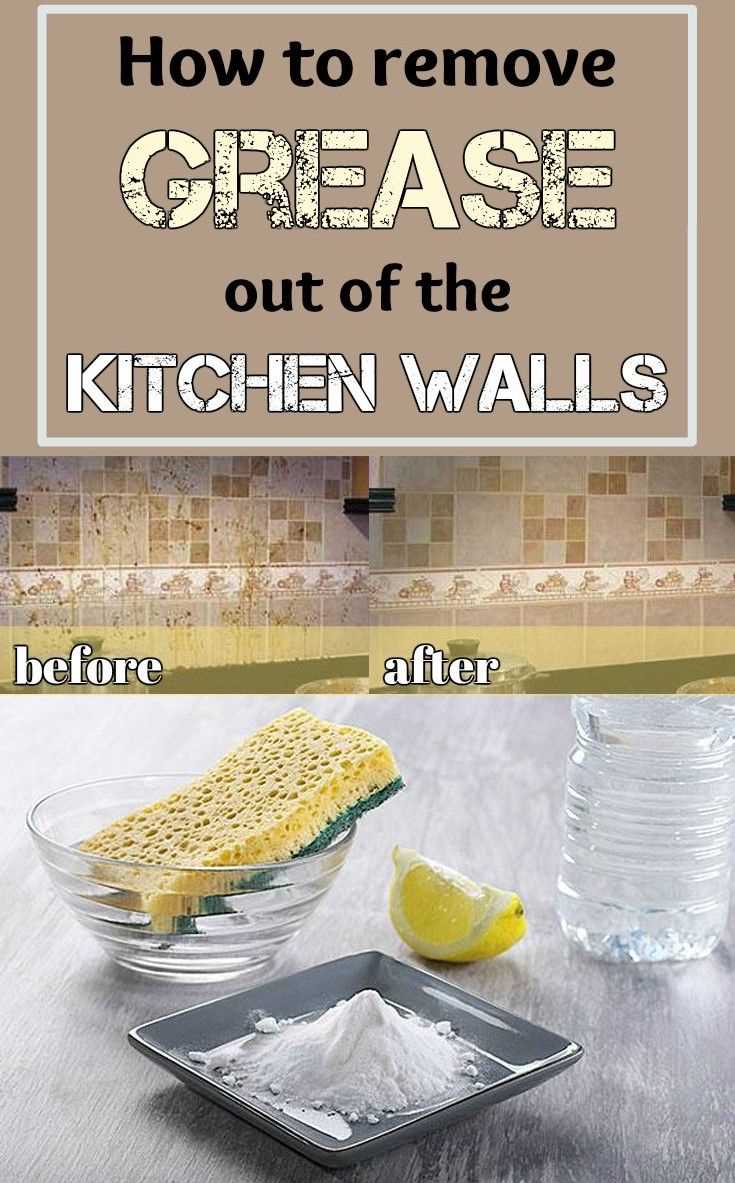
Vinegar is a natural cleaning agent that can help remove grease stains. Mix equal parts white vinegar and water in a spray bottle. Spray the mixture onto the stain and let it sit for a few minutes. Scrub the area with a brush or sponge, then rinse with water.
4. Ammonia Solution
For tough grease stains, you can try using an ammonia solution. Mix 1/2 cup of ammonia with 1 gallon of warm water. Apply the solution to the stain and let it sit for a few minutes. Scrub the area with a brush or sponge, then rinse with water.
5. Commercial Degreaser
If none of the homemade solutions work, you can try using a commercial degreaser. Follow the instructions on the product label and apply it to the grease stain. Scrub the area gently with a brush or sponge, then rinse with water.
- Always wear protective gloves and work in a well-ventilated area when using cleaning products.
- Test any cleaning solution on a small, hidden area of the tiles before applying it to the entire stain.
- For stubborn stains, you may need to repeat the cleaning process several times.
- Regularly clean your tiles to prevent grease buildup and make future cleaning easier.
Using Baking Soda and Vinegar
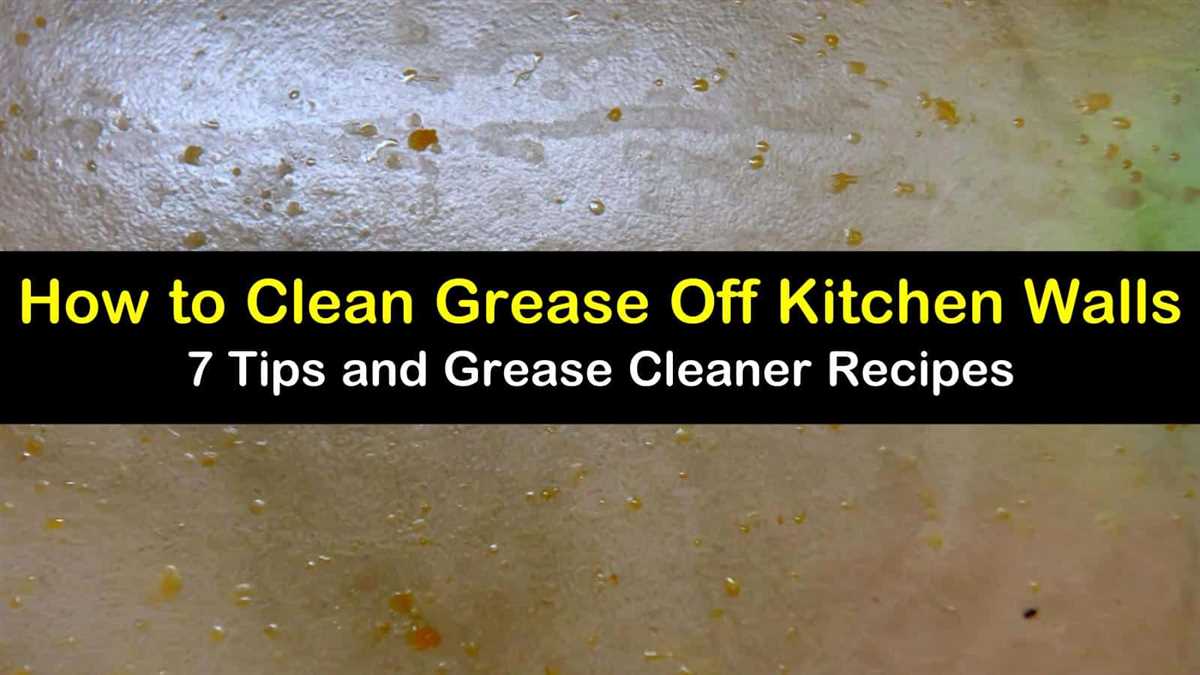
If you’re looking for a natural and effective way to remove grease stains from tiles, you can use a combination of baking soda and vinegar. These common household ingredients work together to break down the grease and lift it off the surface of the tiles.
Materials:
- Baking soda
- Vinegar
- Water
- Bowl
- Soft cloth or sponge
Instructions:
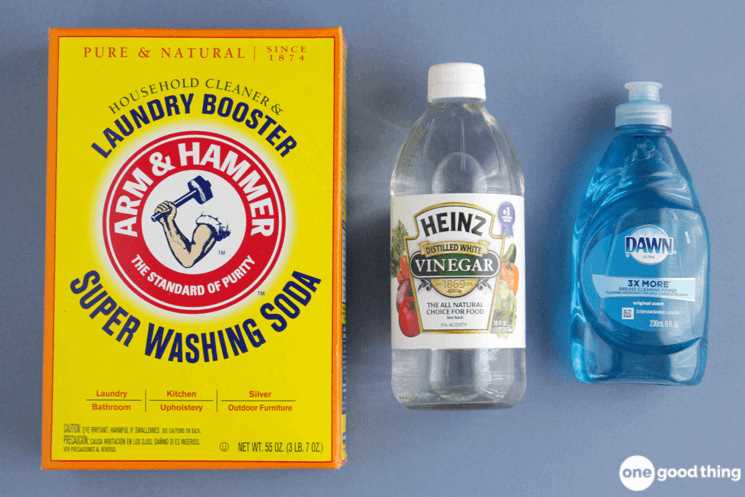
- Begin by combining equal parts baking soda and vinegar in a bowl to create a paste.
- Add a small amount of water to the mixture to achieve a spreadable consistency.
- Take the paste and apply it directly onto the greased area of the tiles.
- Gently scrub the paste into the stain using a soft cloth or sponge.
- Allow the paste to sit on the stain for about 10-15 minutes.
- In the meantime, prepare a mixture of equal parts vinegar and water in a bowl.
- After the waiting period, dip a clean cloth or sponge in the vinegar and water mixture.
- Use the cloth or sponge to wipe away the baking soda paste and the grease stain.
- Rinse the tiles with clean water to remove any remaining residue.
- Dry the tiles thoroughly with a clean cloth or towel.
Note: It’s important to always spot test any cleaning solution on a small, inconspicuous area of the tiles before applying it to the entire stained area. This is to ensure that the solution doesn’t cause any damage to the tiles.
This baking soda and vinegar method is not only effective in removing grease stains but also safe for your tiles and environmentally friendly. Give it a try and enjoy sparkling clean tiles without the use of harsh chemicals!
Using Dish Soap and Warm Water
Dish soap is a common household cleaning agent that can be used to remove grease stains from tiles. When combined with warm water, dish soap can effectively break down grease and make it easier to remove from the surface.
Here is a step-by-step guide on how to use dish soap and warm water to remove grease stains from tiles:
- Gather the necessary materials: dish soap, warm water, a sponge or cloth, and a bucket.
- Fill the bucket with warm water and add a few drops of dish soap.
- Mix the dish soap and warm water together until it forms a soapy solution.
- Dip the sponge or cloth into the soapy solution, ensuring it is fully saturated.
- Gently scrub the grease stain on the tile with the soapy sponge or cloth.
- Apply pressure and make circular motions to effectively remove the grease.
- Rinse the tile with clean water to remove any leftover soap residue.
- Dry the tile thoroughly with a clean towel.
Note: It is important to always test the dish soap on a small, inconspicuous area of the tile before applying it to the grease stain, as some dish soaps can cause discoloration or damage to certain types of tiles.
If the grease stain persists after using dish soap and warm water, it may be necessary to try alternative methods or seek professional cleaning assistance.
Using Oxygenated Bleach
Oxygenated bleach is a powerful and effective cleaning agent that can help remove grease stains from tiles. It contains hydrogen peroxide, which breaks down the grease molecules and lifts them away from the surface.
Here’s how you can use oxygenated bleach to remove grease stains from tiles:
- Mix the solution: In a bucket, mix water with the recommended amount of oxygenated bleach according to the manufacturer’s instructions.
- Prep the area: Before applying the solution, remove any loose debris or dirt from the tile surface. You can use a soft brush or a vacuum cleaner to do this.
- Apply the solution: Use a sponge or a cloth to apply the oxygenated bleach solution to the greasy areas of the tiles. Make sure to saturate the stains completely.
- Let it sit: Allow the solution to sit on the stains for about 10-15 minutes. This will give the oxygenated bleach enough time to break down the grease.
- Scrub: After the solution has had time to work, use a scrub brush or a non-abrasive sponge to gently scrub the stained areas. Apply some pressure, but be careful not to damage the tiles.
- Rinse: Once you’ve scrubbed away the grease stains, rinse the tiles thoroughly with clean water to remove any residue.
- Dry the tiles: Use a clean towel or a mop to dry the tiles completely. This will prevent any water spots or streaks from forming.
By using oxygenated bleach, you can effectively remove grease stains from your tiles and restore their natural beauty.
Prevention and Maintenance
1. Regular Cleaning
To prevent grease stains from building up on your tiles, it is essential to establish a regular cleaning routine. This should involve sweeping or vacuuming the area to remove any loose dirt or debris before proceeding with the cleaning process.
2. Dishwashing Liquid and Warm Water

To maintain the cleanliness of your tiles and prevent grease stains, mix a small amount of dishwashing liquid with warm water. Use a soft cloth or mop to apply the solution to the surface of the tiles, gently scrubbing away any grease or grime. Rinse with clean water and dry thoroughly.
3. Avoid Using Abrasive Cleaners
When it comes to cleaning grease stains from tiles, it is important to avoid using abrasive cleaners. These can damage the surface of the tiles and make them more prone to staining. Stick to mild cleaning products and methods that are safe for use on tiles.
4. Wipe Spills Immediately
To prevent grease stains from setting into your tiles, it is crucial to wipe up any spills immediately. The longer a grease stain sits on the surface of your tiles, the more difficult it will be to remove. Keep a cloth or paper towel on hand to quickly address any spills or splatters.
5. Use Protective Mats
If you regularly cook or work in an area that is prone to grease splatters, consider using protective mats. These can be placed on the countertop or floor to catch any grease and prevent it from staining your tiles. Mats can be easily cleaned or replaced when necessary.
6. Regular Sealing
To maintain the integrity of your tiles and prevent grease stains from penetrating the surface, it is recommended to regularly seal your tiles. This will create a protective barrier that makes it easier to clean up spills and prevents staining.
7. Proper Ventilation
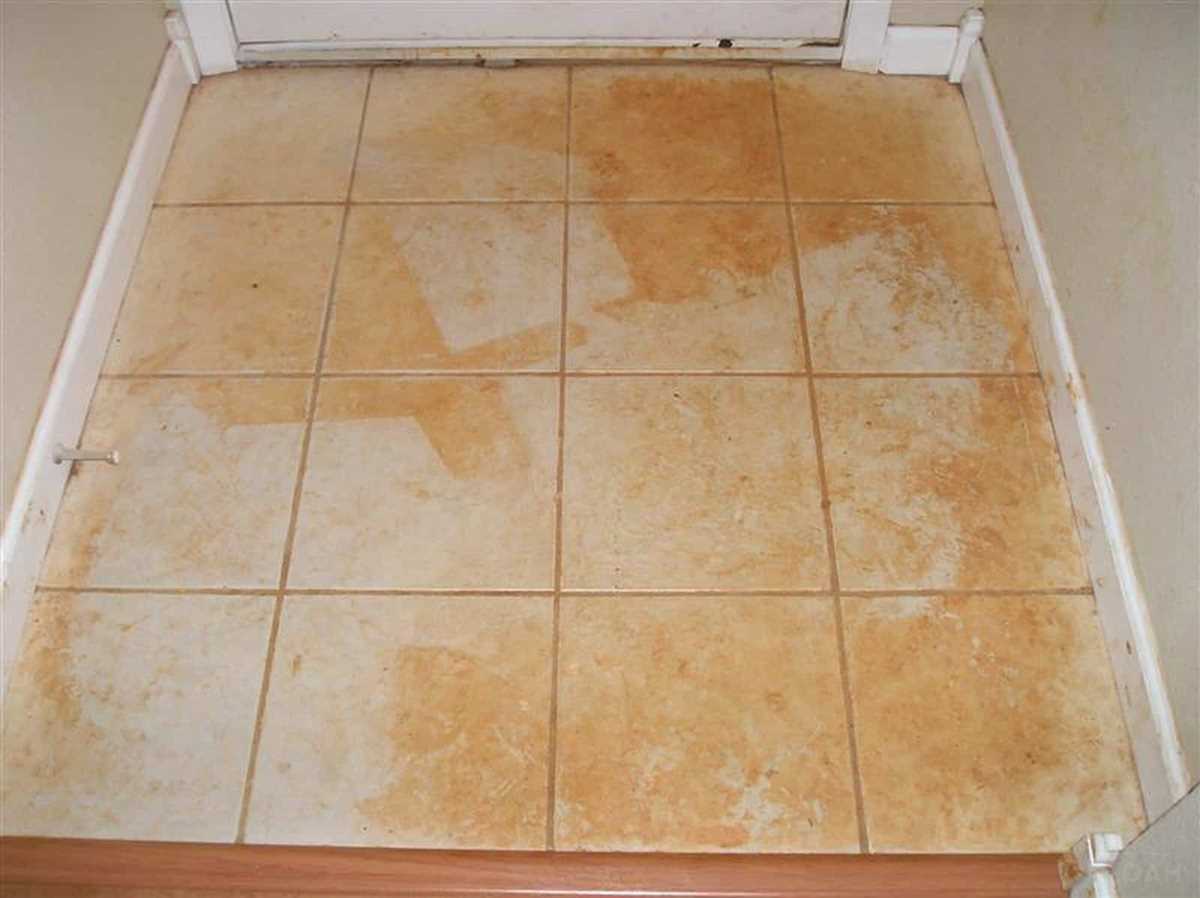
Poor ventilation in the kitchen or bathroom can contribute to the buildup of grease on tile surfaces. Ensure that your space is well-ventilated to reduce the amount of grease in the air and minimize the risk of stains.
8. Professional Cleaning
If you have tried various methods to remove grease stains from your tiles without success, it may be necessary to seek professional cleaning services. Professionals have the equipment and expertise to deep-clean your tiles, removing even the toughest grease stains.
By following these prevention and maintenance tips, you can ensure that your tiles remain free from grease stains and maintain their beauty for years to come.
FAQ
What are some effective ways to remove grease stains from tiles?
There are several effective ways to remove grease stains from tiles. One method is to mix equal parts of vinegar and water, and then apply the solution to the stained area. Let it sit for a few minutes, and then scrub with a brush or sponge. Another method is to sprinkle baking soda on the stain, and then spray some water on top to form a paste. Let it sit for a while, and then scrub away the grease. You can also try using a commercial grease remover, following the instructions on the label.
Can I use bleach to remove grease stains from tiles?
Bleach can be effective in removing grease stains from tiles, but it should be used with caution. Bleach is a strong chemical that can damage certain types of tiles, especially if they are porous or have a sealant. It is recommended to test a small, inconspicuous area first to see how the tile reacts to the bleach. If there is no adverse reaction, you can proceed by diluting the bleach with water and applying it to the stain. Leave it on for a few minutes, and then scrub gently with a brush or sponge.
Are there any natural remedies for removing grease stains from tiles?
Yes, there are several natural remedies for removing grease stains from tiles. One option is to make a paste using baking soda and water, and then apply it to the stain. Let it sit for a while, and then scrub away the grease. Another option is to use white vinegar. Mix equal parts of vinegar and water, and then apply the solution to the stained area. Let it sit for a few minutes, and then scrub with a brush or sponge. Lemon juice is also effective in breaking down grease. Squeeze some lemon juice onto the stain, let it sit for a while, and then scrub away the grease.
What should I do if the grease stain is stubborn and won’t come off?
If the grease stain is stubborn and won’t come off, there are a few things you can try. First, you can try using a stronger cleaning solution. Mix equal parts of dish soap and ammonia, and then apply the solution to the stain. Let it sit for a few minutes, and then scrub with a brush or sponge. You can also try using a steam cleaner to loosen the grease. If all else fails, you may need to consider replacing the affected tiles.
How can I prevent grease stains from forming on my tiles?
To prevent grease stains from forming on your tiles, it is important to regularly clean and maintain them. Wipe up any spills or splatters immediately to prevent them from seeping into the tiles. Use a mild detergent or dish soap to clean the tiles regularly, and avoid using harsh chemicals that can strip away the sealant. If possible, install a backsplash behind the stove or cooking area to protect the tiles from grease splatters. Additionally, make sure to properly ventilate the cooking area to reduce grease buildup.













